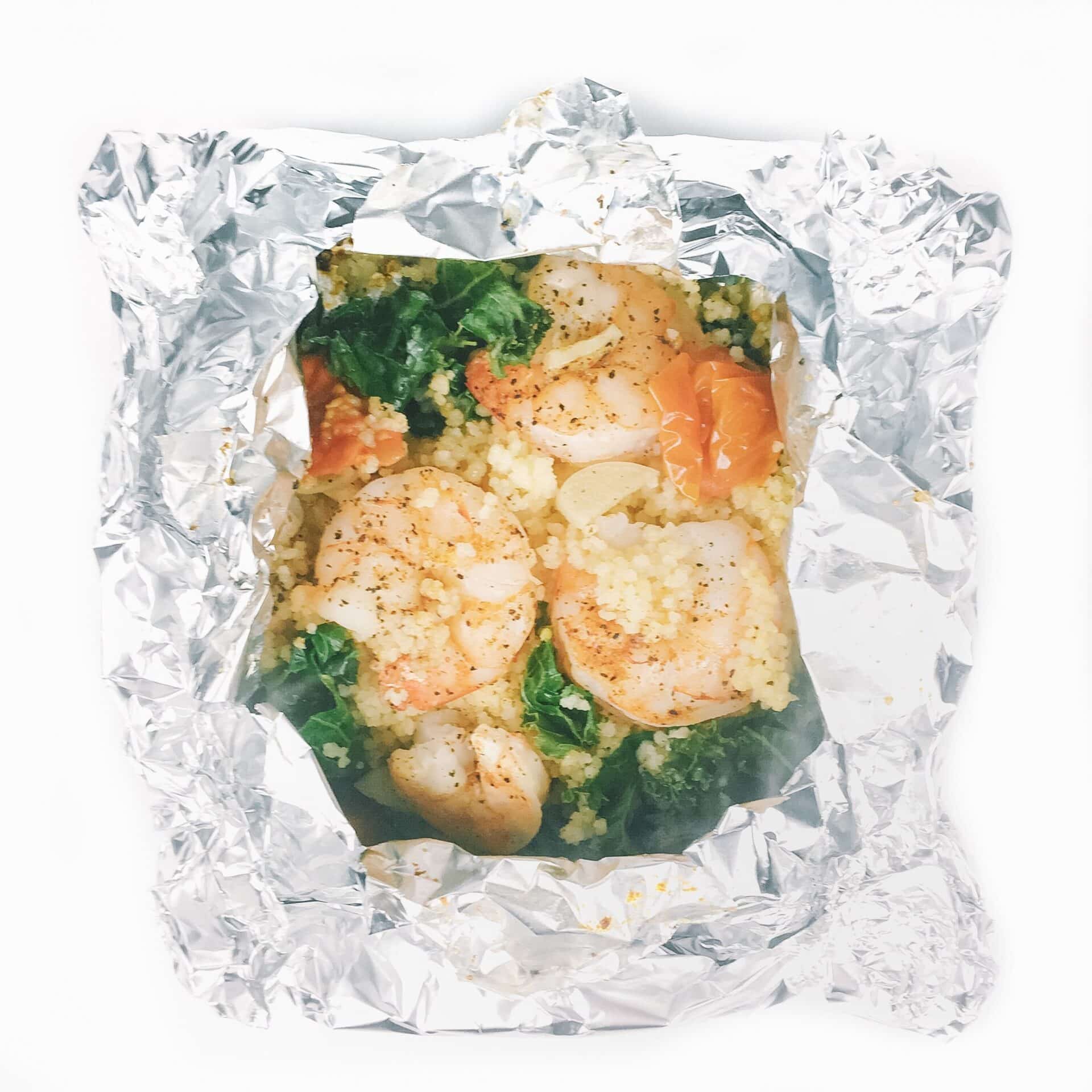There’s nothing that says summer more than a freshly picked tomato from the garden. But when they all ripen at the same time, it can be tough to know how to use them. Continue reading for 5 Delicious ways to use Garden Tomatoes.
Author: Hayley Harris, RD
5 Delicious Ways to Use Garden Tomatoes
There’s nothing better than biting into a homemade burger topped with a fresh tomato, straight from the garden at the end of summer. Ripe garden tomatoes are more aromatic, flavorful, and most importantly, more nutritious then their pink, chalky counterparts found in the grocery store mid-winter. They have far more exposure to sunlight because they are allowed to ripen on the vine instead of being picked prematurely to transport to your local store (1-2).
This extra exposure to sunlight isn’t just good for adding extra flavor to tomatoes, it also encourages the fruit to produce more antioxidants like lycopene, lutein, and beta-carotene. Similar to a built-in “sunscreen,” these antioxidants protect the fruit from the sun’s damaging UV rays. Those antioxidants in-turn protect our own cells from damage when we consume them. Consuming tomatoes helps lower inflammatory markers within the body, plays a role in preventing diseases of the cardiovascular system, and even protects the body against certain cancers! That’s a good enough reason to eat more garden tomatoes, even if they weren’t so much more delicious! (3-6)
Speaking of nutrients, did you know certain varieties of tomatoes contain more nutrients than others? Whether you are an avid tomato gardener and want to select the most nutrient rich varieties to grow, or more of a farmer’s market shopper and want to buy the best specimens to eat, these tips are for you! Smaller tomatoes have the highest concentration of nutrients such as flavonoids, vitamin C, biotin, potassium and others.
Larger tomatoes tend to have higher water and sugar content and slightly less of those beneficial nutrients. Choose tomatoes that are deep red in color for highest lycopene content. Orange and yellow varieties are delicious and beautiful to look at, but contain less lycopene. Purple tomatoes (usually found in heirloom varieties) actually contain their own unique antioxidant pigment; anthocyanin. A variety of colors can be used when eating fresh tomatoes, but if you’re planning on heating them for sauces or stews, look for the deep red variety (7).
One of the most unique things about tomatoes is that they are still very nutritious after cooking. In fact, heating tomatoes actually increases the concentration of lycopene and your body’s ability to use it! While most nutrients break down when heated, the more you reduce tomatoes in say, a sauce, or even a paste, the more lycopene you get! Add a source of fat with the reduced tomatoes, such as olive oil, and you increase the ability to use lycopene even more! (8)
The only trouble with fresh tomatoes is that they all seem to ripen at once. You wait all summer long for those beautiful green orbs to soften and turn a vibrant red and then you run out of things to do with them. Here are some great ideas for enjoying fresh, summer tomatoes in various ways so you can enjoy more of them!
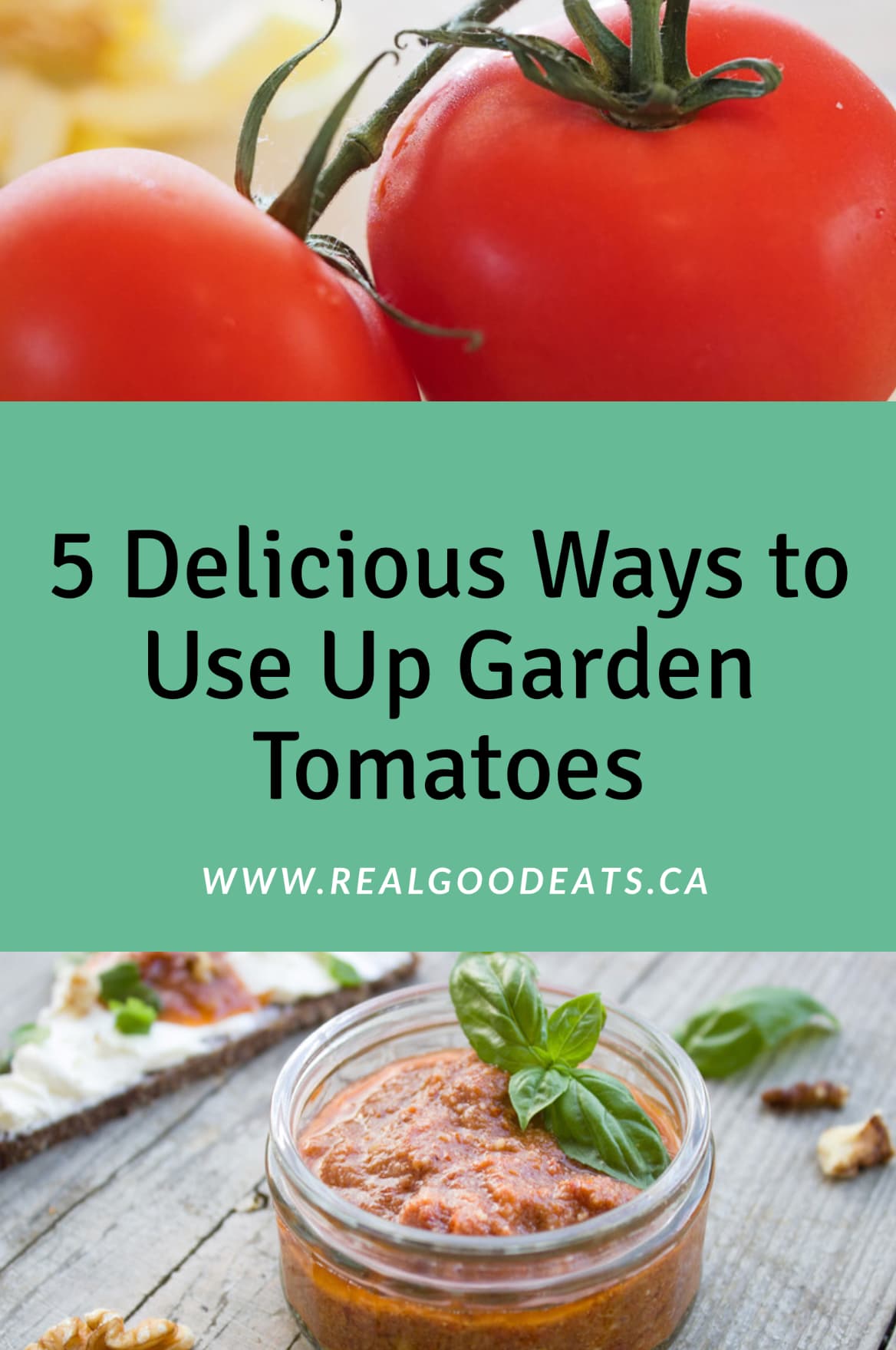
5 Delicious Ways to Use Garden Tomatoes
1. Star of a Salad
Theres no better way to use garden tomatoes. Caprese Salad is one of summer’s most delicious dishes and features only a few simple ingredients, most of which are tomatoes and none of which are lettuce! Simply slice a few garden tomatoes into a large bowl and add a handful of basil leaves and fresh mozzarella slices. Toss with balsamic vinegar, olive oil, salt and pepper and you have yourself a refreshing summer salad! If you are already a fan of Caprese Salad, try this same flavor combo on this recipe for 30-min Chicken Caprese.
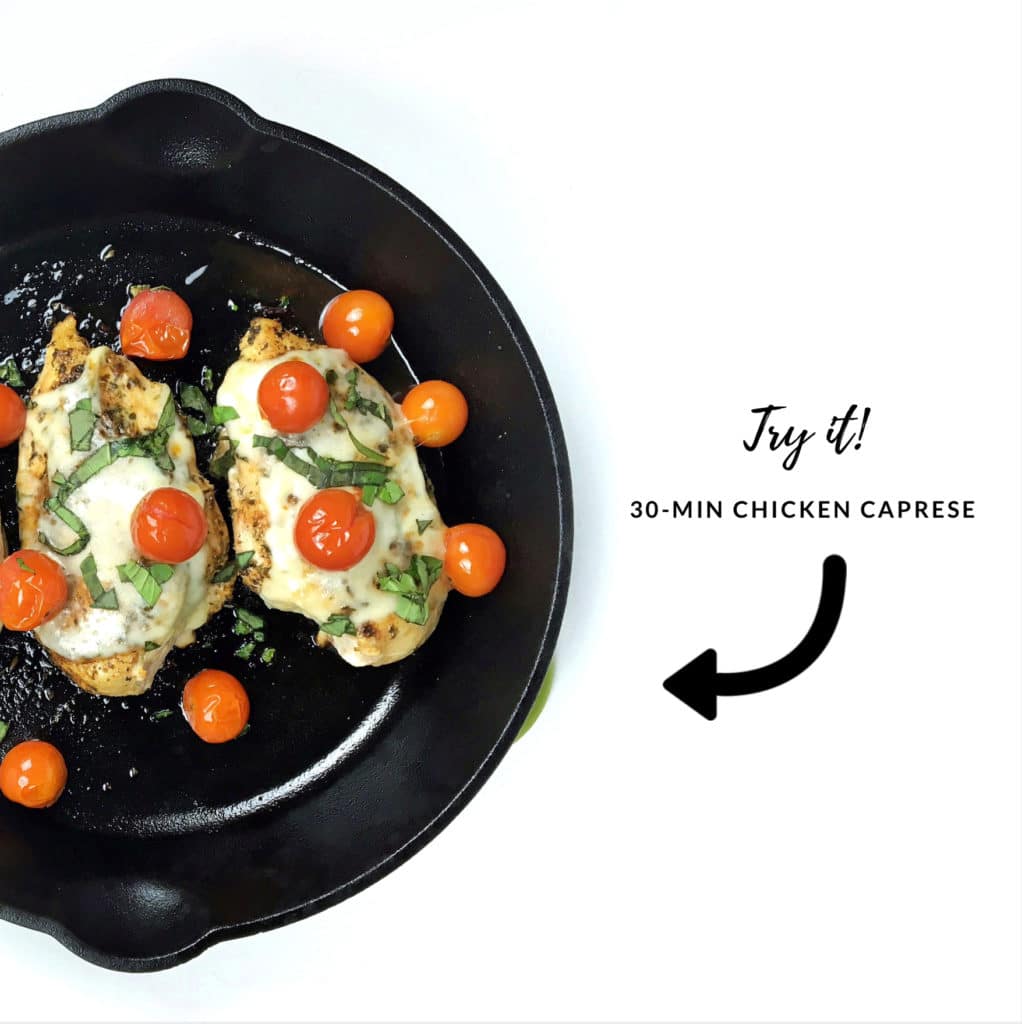
2. Make Your Own Salsa
One of my favourite ways to use garden tomatoes. Think outside the box…or jar, and make your own salsa! Fresh salsa made with chopped tomatoes, onions, peppers, lime juice and garlic salt is a classic, but delicious way to top a chip! But you can also make your own unique salsa by adding pineapple, mango, cucumber, hot peppers, fresh herbs (cilantro, parsley, or mint) or other fun ingredients! Starting with a base of fresh tomatoes, you can completely personalize your salsa by experimenting with different mix-ins. Give your salsa a health boost by skipping the chips and instead try it on eggs, pork tacos (especially mango salsa) or even on top of broiled fish.
3. Stew your Own
Skip the canned variety of stewed tomatoes and make your own! You can throw them in a pot with some seasonings like basil and oregano, add some heat, then use in your favorite recipes. You can also make a big batch, put them in freezer-safe bags and freeze them for up to a year. This is a great way to use up a surplus of tomatoes! If you don’t like the idea of eating stewed skins, it’s easy to remove! Simply drop tomatoes into a pot of boiling water for 1-2 minutes, place in an ice-bath and the skin will peel right off. If you don’t want to make a huge batch of stewed tomatoes but you love the taste of them, try this recipe Shrimp and Garlicky Tomatoes with Kale and Couscous.
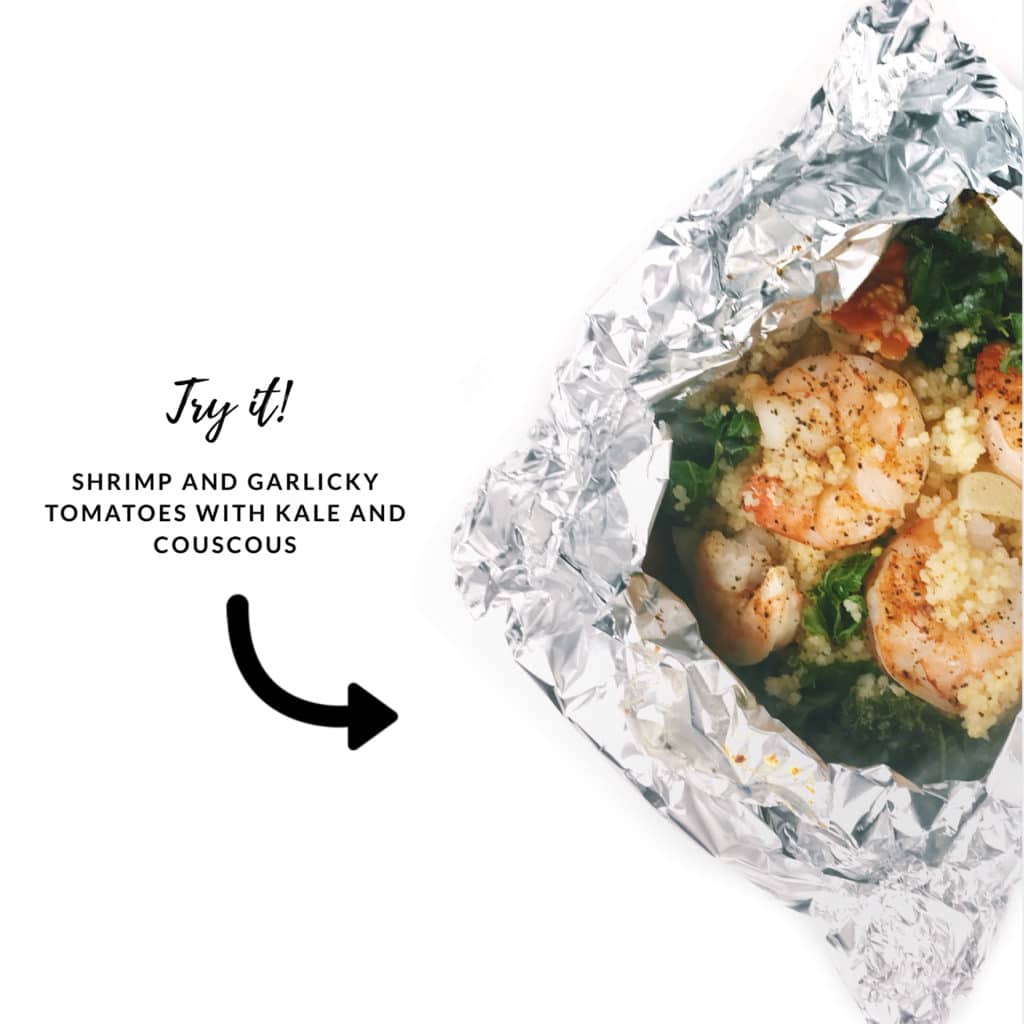
4. Roast for Extra Flavor
If you’ve never tried roasted cherry tomatoes, put this on your menu immediately! Roasting small tomatoes creates a juicy, meaty flavor that is hard to beat. Simply toss a few tomatoes with olive oil, season to taste, and pop in the oven for 10-20 minutes until the skin begins to soften and burst. For a delicious meal using roasted tomatoes that is all assembled on one sheet pan, try this recipe for Sheet Pan Garlic Butter Tilapia.
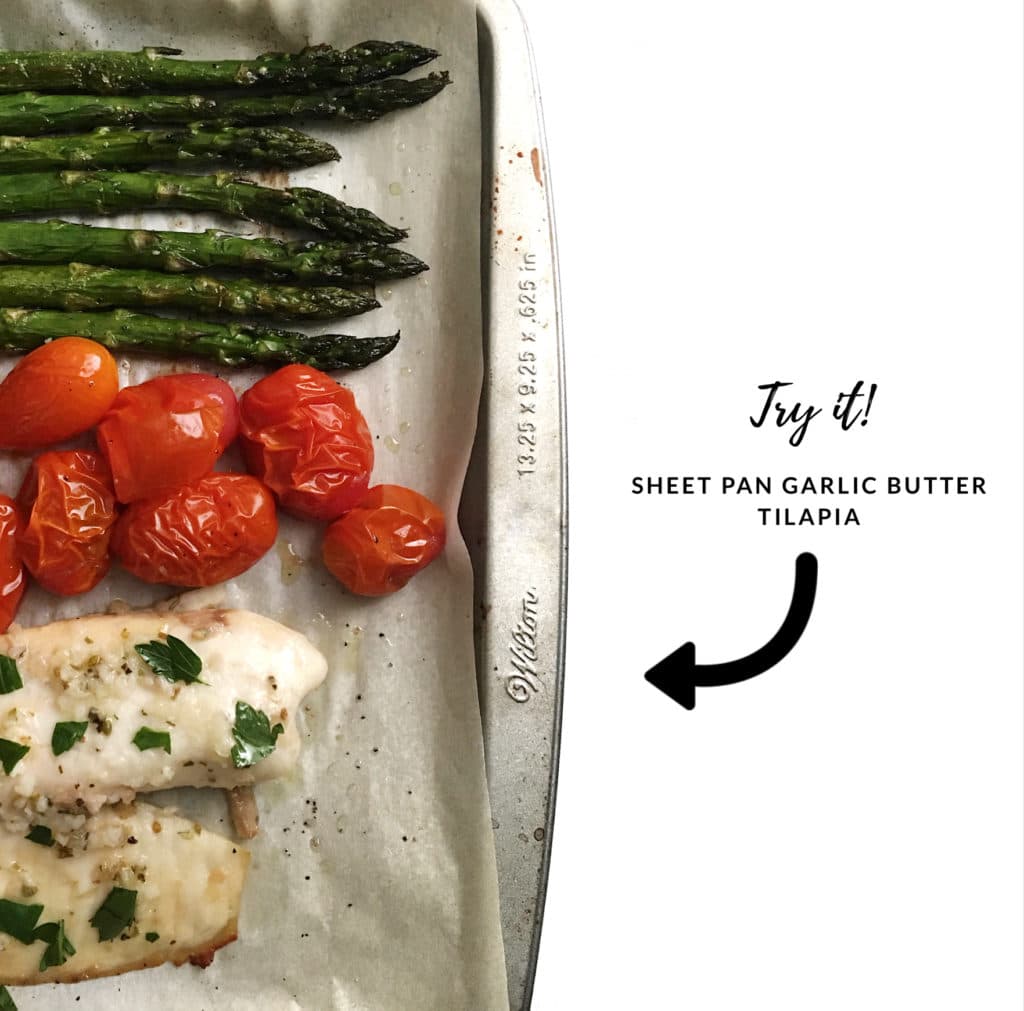
5. Throw them in a Blender
Pureed tomatoes are a delicious base for sauces, drinks, or even soups. For a simple, yet delicious sauce, blend fresh tomatoes, garlic, olive oil, red wine vinegar and a few almonds in a high powered blender. This tomato-based Romesco sauce is delicious served with pasta, chicken, or breaded fish.
Tomatoes are a tasty, nutritious veggie that can be enjoyed so many different ways! Don’t let this season’s star vegetable go un-eaten and try a new recipe today!
1. Anthon GE, LeStrange M, and Barrett DM. Changes in pH, acids, sugars and other quality parameters during extended vine holding of ripe processing tomatoes. J Sci Food Agric. 2011 May;91(7):1175-81. 2011.
2. Moneruzzaman KM, Hossain ABMS, Sani W et al. Effect of Stages of Maturity and Ripening Conditions on the Biochemical Characteristics of Tomato. American Journal of Biochemistry and Biotechnology Year: 2008 Vol: 4 Issue: 4 Pages/record No.: 336-344. 2008.
3. Lippi G and Targher G. Tomatoes, lycopene-containing foods and cancer risk. Br J Cancer. 2011 Mar 29;104(7):1234-5. Epub 2011 Feb 22. 2011.
4. Mackinnon ES, Rao AV, and Rao LG. Dietary restriction of lycopene for a period of one month resulted in significantly increased biomarkers of oxidative stress and bone resorption in postmenopausal women. J Nutr Health Aging. 2011 Feb;15(2):133-8. 2011.
5. Palozza P, Parrone N, Catalano A et al. Tomato lycopene and inflammatory cascade: basic interactions and clinical implications. Curr Med Chem. 2010;17(23):2547-63. 2010.
6. Sesso HD, Liu S, Gaziano JM et al. Dietary lycopene, tomato-based food products and cardiovascular disease in women. J Nutr Jul;133(7): 2336-41. 2003. 2003.
7. Gonzali S, Mazzucato A, and Perata P. Purple as a tomato: towards high anthocyanin tomatoes. Trends Plant Sci. 2009 May;14(5):237-41. Epub 2009 Apr 8. 2009.
8. Li Q, Li T, Liu C, et al. Potential physicochemical basis of Mediterranean diet effect: Ability of emulsified olive oil to increase carotenoid bioaccessibility in raw and cooked tomatoes. Food Res Int. 2016 Nov;89(Pt 1):320-329.
Don’t miss a thing! Subscribe to receive the latest recipes and healthy eating tips straight to your inbox! ?
[yikes-mailchimp form=”2″]
About Hayley
Hayley is a Registered Dietitian Nutritionist, a part-time yoga teacher, and full-time mother. She has always been passionate about health and empowering others to make healthy living a little easier. She has worked as a health coach, fitness instructor, nutrition writer, and recipe developer. She is passionate about delicious food and making “healthy” taste good. She loves trying new recipes, eating Thai food, paddle-board yoga, and hiking in her home state of Montana. She hopes to inspire others to eat closely to the way that nature intended, capitalizing on the amazing benefits of whole, unprocessed foods. Follow her posts on @hayleyharrisnutrition for nutrition advice and delicious recipes!

